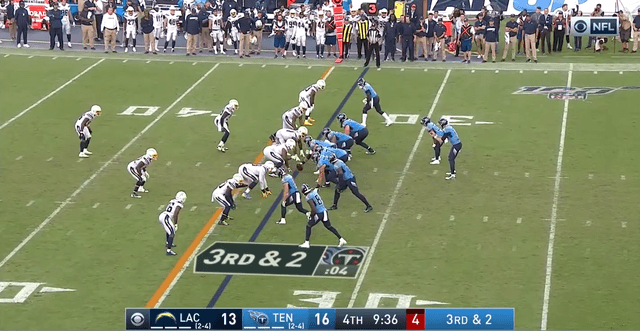Comeback Player of the Year has always been light on details and criteria, but whatever the measure it would be hard to give the award to anybody other than Ryan Tannehill this season for what he did with the Tennessee Titans.
The Titans were 2-4 early in the season with Marcus Mariota playing his way to the bench. He had been flirting with it for weeks, but Mike Vrabel finally made the switch and pulled him for Tannehill, whose modest contract the team had traded for in the offseason just to provide some cover presumably in case Mariota got hurt — not as a viable alternative option.
Little to nothing was expected of Tannehill when he came in — the move was more about making the point that Mariota’s level of play simply wasn’t acceptable — but Tannehill immediately transformed the team and the offense. They snagged a Wild Card spot and made their way into the playoffs on the back of winning seven of their last 10 games, including a do-or-die encounter with division winner Houston late in the season.
Tannehill was so good during the regular season, despite everybody expecting the wheels to fall off each week, that he finished the season with the best overall PFF grade of any quarterback (92.5). Things were certainly more lackluster in the playoffs, but even in those games he made multiple key passes in their two upset wins before the entire team was found wanting against the Chiefs in the AFC Championship Game.

Tannehill hit a level so far above his previous career baseline it’s scarcely believable. The last time we saw him play meaningful snaps a season ago, he was the lowest-ranked quarterback in the NFL for the woeful Dolphins. That was obviously not Tannehill at his best, but even his career best before that was back in 2013 in which he was 10 PFF grading points lower than he managed this season. His baseline in the first five years of his career was in the mid-70s from a grading standpoint, not the 90-plus player of this year.
Over the last couple of seasons, Tannehill saw his once-promising NFL career derailed by injury and the deteriorating situation in Miami, only compounded by his play when he was actually on the field.
This season, he didn’t just come back and prove he could get back to the level he was before things started to go awry, he actually set a new high-water mark for play that he can achieve at this level. He elevated the play of those around him — rookie wideout A.J. Brown became a superstar with Tannehill throwing him the football, and Derrick Henry largely began to look like the best back in football once the passing offense elevated its play.
Tannehill led the NFL in passer rating from a clean pocket, posting a mark of 122.8, and that is among the most stable and predictable of metrics PFF tracks. When under pressure, only Drew Brees had a higher passer rating than the 98.4 Tannehill had, and that is much the same story across the board, where Tannehill by almost any metric you wish to look at was among the very best quarterbacks in football.
It may not be indicative of his future performance level, but for Tannehill to come back from his starting prospects being effectively over to leading a team to the playoffs on the back of the best play of his career is a phenomenal achievement. At the very minimum, Tannehill has proven he can be a viable starting option for NFL teams once again, and it would seem likely he has earned himself the guaranteed money of the franchise tag from Tennessee, who would struggle to justify moving in another direction at the position entirely.
Ryan Tannehill is a deserved winner of this year’s PFF Comeback Player of the Year.



 © 2025 PFF - all rights reserved.
© 2025 PFF - all rights reserved.